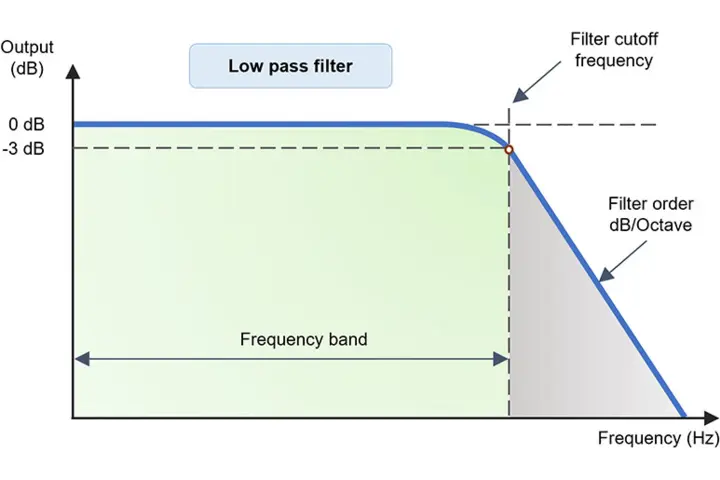What is an idealised filter?
An idealised filter cuts off the measurement signal at a certain cut-off frequency or allows the measurement signal to pass above a certain cut-off frequency, whereby a clear separation of the required frequency range is created. The cut-off frequency separates the passband from the stopband of the filter.
What is meant by 'real filter'?
A real filter always has a transition range from the passband to the stopband in the range of the cut-off frequency. In the transition range, the frequency components are already attenuated, but not completely suppressed. The attenuation already begins at frequencies in the passband and continuously increases during the transition to the stopband until the frequency components are completely eliminated.
What is the effect of a low-pass filter?
With a low-pass filter of, for example 150 Hz, all frequencies above 150 Hz are cut off. Thus, the signal is only passed in the frequency range up to the set cut-off frequency.
What is the effect of a high-pass filter?
The opposite behaviour of a low-pass filter applies to the high-pass filter. If the cut-off frequency is set at 150 Hz, all frequencies above 150 Hz are transmitted.
What is a band-pass filter?
With this type of filter, two cut-off frequencies must be defined because the band-pass filter is a combination of first a high-pass filter followed by a low-pass filter. As a result, a defined frequency band is considered. If the lower cut-off frequency is set at 150 Hz and the upper cut-off frequency at 300 Hz, the result is a frequency band between the two cut-off frequencies that passes.
What is the effect of a bandstop filter?
Also often called a notch filter, the bandstop filter is a combination of a low-pass filter followed by a high-pass filter. This makes it possible, for example, to filter out certain frequency ranges in which interfering frequencies are present within a range. If the lower cut-off frequency is defined at 150 Hz and the upper cut-off frequency at 300 Hz, the frequencies in between are filtered.
What is meant by filter orders?
The order of a filter defines the steepness in the transition range between passband and stopband. The higher the order of a filter, the steeper the transition range. An n. order has a steppness of n x 20 dB per frequency decade. The steepness of the transition range of a second order filter is 40 dB per frequency decade.
Higher order filters are obtained by connecting several filters in series. For example, if two second-order low-pass filters are connected in series, a fourth-order low-pass filter is created.





